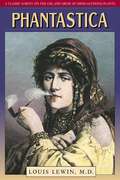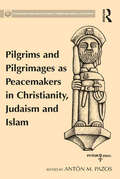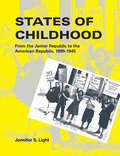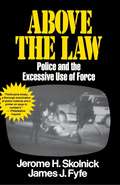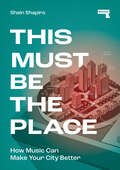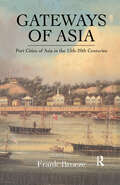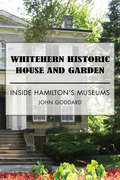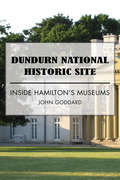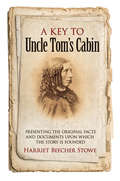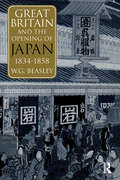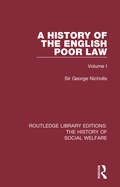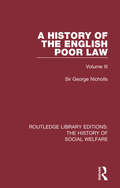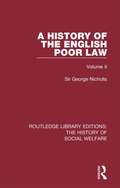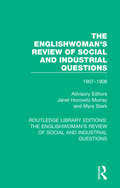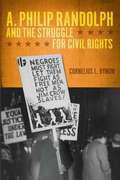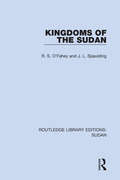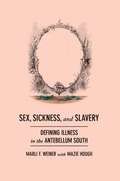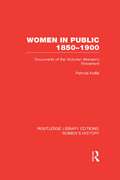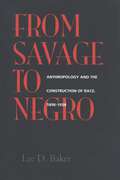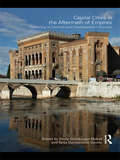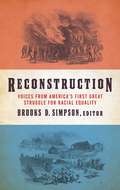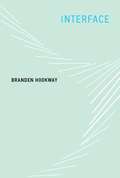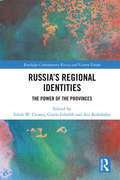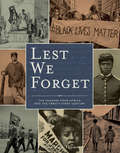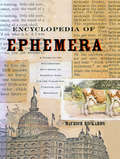- Table View
- List View
Phantastica: A Classic Survey on the Use and Abuse of Mind-Altering Plants
by Louis LewinLong out of print, this is a landmark study on narcotic and psychedelic substances by a world-renowned pharmacologist and toxicologist • The first book to bring non-judgmental scientific insights to the use of drugs around the world• Provides detailed information on all major drugs of the time, including opium, cocaine, heroin, cannabis, peyote, fly agaric, henbane, datura, alcohol, kava, betel, coffee, tea, cocoa, and tobacco• A book credited with starting an era of ethnobotany that continues to the present dayThe publication of Louis Lewin's Phantastica in 1924 began an era of ethnobotany that is still flourishing today. Until Lewin, books on the use of drugs were purely works of anthropology, concerned with how people used these plants, rather than how the plants produced their famous effects. Lewin, a world-renowned pharmacologist and toxicologist, was fascinated by both, and Phantastica was the first book to bring scientific insights to a survey of the use of drugs around the world. Lewin traveled extensively and acquired an astonishing variety of knowledge, reflected in this book, which provides detailed information on all major drugs of the time, including opium, cocaine, heroin, cannabis, peyote, fly agaric, henbane, datura, alcohol, kava, betel, coffee, tea, cocoa, and, of course, tobacco. For thirty years ethnobotanists have bemoaned the fact that Phantastica has been impossible to find; now this landmark work is once again available.
Pilgrims and Pilgrimages as Peacemakers in Christianity, Judaism and Islam (Compostela International Studies in Pilgrimage History and Culture)
by Antón M. PazosPilgrimages can be analysed as acts of conflict - such as the Crusades - or also as platforms for relationship building and rapprochement between religions. With a set of contributions from leading experts in the field, this book explores the concept of pilgrimage in Christianity, Judaism and Islam. Some specific examples of pilgrimages that helped to strengthen links between different religions or civilisations are explored, ranging from Europe to Asia and from the Middle Ages to the twentieth century. Even though every pilgrimage that is investigated here has helped to link different worlds, the case studies show that this relationship rarely led to a better in inter-understanding. Nowadays, peaceful coexistence seems to be its greatest achievement.
States of Childhood: From the Junior Republic to the American Republic, 1895-1945
by Jennifer S. LightHow "virtual adulthood"--children's role play in simulated cities, states, and nations--helped construct a new kind of "sheltered" childhood for American young people.A number of curious communities sprang up across the United States in the late nineteenth and early twentieth century: simulated cities, states, and nations in which children played the roles of legislators, police officers, bankers, journalists, shopkeepers, and other adults. They performed real work--passing laws, growing food, and constructing buildings, among other tasks--inside virtual worlds. In this book, Jennifer Light examines the phenomena of "junior republics" and argues that they marked the transition to a new kind of "sheltered" childhood for American youth. Banished from the labor force and public life, children inhabited worlds that mirrored the one they had left.
Above the Law
by Skolnick FyfeThe now-famous videotape of the beating of Rodney King precipitated a national outcry against police violence. Skolnick and Fyfe, two of the nation's top experts on law enforcement, use the incident to introduce a revealing historical analysis of such violence and the extent of its survival in law enforcement today.
This Must Be the Place: How Music Can Make Your City Better
by Shain ShapiroThis Must Be the Place explores how music can make cities better.This Must Be the Place introduces and examines music&’s relationship to cities. Not the influence cities have on music, but the powerful impact music can have on how cities are developed, built, managed and governed.Told in an accessible way through personal stories from cities around the world — including London, Melbourne, Nashville, Austin and Zurich — This Must Be the Place takes a truly global perspective on the ways music is integral to everyday life but neglected in public policy.Arguing for the transformative role of artists and musicians in a post-pandemic world, This Must Be The Place not only examines the powerful impact music can have on our cities, but also serves as a how-to guide and toolkit for music-lovers, artists and activists everywhere to begin the process of reinventing the communities they live in.
Gateways Of Asia
by BroezeFirst Published in 1997. Routledge is an imprint of Taylor & Francis, an informa company.
Whitehern Historic House and Garden: Inside Hamilton's Museums
by John GoddardInside Hamilton’s Museums helps to satisfy a growing curiosity about Canada’s steel capital as it evolves into a post-industrial city and cultural destination. In this special excerpt we visit Whitehern historic home and garden, which comes with three generations' worth of family possessions — everything from antique furniture to paintings, photographs, diaries, letters, and old toys. John Goddard takes us on a detailed tour of the historic home, providing fascinating historical background and insight into the McQuesten family secrets.
Battlefield House Museum and Park: Inside Hamilton's Museums
by John GoddardInside Hamilton’s Museums helps to satisfy a growing curiosity about Canada’s steel capital as it evolves into a post-industrial city and cultural destination. In this special excerpt we visit Battlefield House Museum and Park, which commemorates the British victory at the 1813 Battle of Stoney Creek that stopped the American army from capturing Upper Canada. John Goddard takes us on a detailed tour of the historic house and gardens, offering historical background to the battle and into the lives of James and Mary Gage.
A Key to Uncle Tom's Cabin: Presenting the Original Facts and Documents Upon Which the Story Is Founded (History Of The United States Ser.)
by Harriet Beecher Stowe"I highly recommend reading this supplement in conjunction with Ms. Stowe's novel to gain a better understanding of the history of our nation." -- The Literary SouthIn 1852 Harriet Beecher Stowe published Uncle Tom's Cabin, an instant classic that received overwhelming acclaim by Northerners and other abolitionist readers. Southerners, conversely, strongly denied the novel's accuracy. The following year Stowe answered pro-slavery critics with this unique bestseller, a meticulous and thoughtful defense of her work, which cites real-life equivalents to her characters.Southern readers were further incensed by this follow-up volume, their wrath in no small part inflamed by a Yankee woman's presuming to tell men what to think. A critical aspect of Stowe's Key is her critique of the law's support of not only the institution of slavery but also the mistreatment of individual slaves. As in the original novel, her challenge extends beyond slavery to the law itself. American society's first widely read political novel, Uncle Tom's Cabin influenced the development of the nation's literature, particularly in terms of protest writing. This supplement to the novel offers valuable insights into a historical and literary landmark.
Great Britain and the Opening of Japan 1834-1858: 1858
by William G Beasley William G. BeasleyReissue in paperback (with new Introduction) of the 1951 classic analysis of the crucial years leading up to the Meiji restoration in which Britain provided Japan with its wealth and power model.
A History of the English Poor Law: Volume I (Routledge Library Editions: The History of Social Welfare #13)
by Sir George NichollsFirst published in 1854, this comprehensive work charts over three volumes the history of poor relief in England from the Saxon period through to the establishment of the Poor Law Amendment Act in 1834 and its reception. This edition, updated in 1898, also includes a biography of the author, Sir George Nicholls. Volume I examines poor relief from the Saxon period to the reign of Queen Anne. This set of books will be of interest to those studying the history of the British welfare state and social policy.
A History of the English Poor Law: Volume III (Routledge Library Editions: The History of Social Welfare #13)
by Sir George NichollsFirst published in 1854, this comprehensive work charts over three volumes the history of poor relief in England from the Saxon period through to the establishment of the Poor Law Amendment Act in 1834 and its reception. This edition, updated in 1898, also includes a biography of the author, Sir George Nicholls. Volume III examines poor relief from 1834 to 1898. This set of books will be of interest to those studying the history of the British welfare state and social policy.
A History of the English Poor Law: Volume II (Routledge Library Editions: The History of Social Welfare #13)
by Sir George NichollsFirst published in 1854, this comprehensive work charts over three volumes the history of poor relief in England from the Saxon period through to the establishment of the Poor Law Amendment Act in 1834 and its reception. This edition, updated in 1898, also includes a biography of the author, Sir George Nicholls. Volume I examines poor relief from the accession of George I to 1854. This set of books will be of interest to those studying the history of the British welfare state and social policy.
The Englishwoman's Review of Social and Industrial Questions: 1907-1908 (Routledge Library Editions: The Englishwoman's Review of Social and Industrial Questions #39)
by Janet Horowitz Murray Myra StarkThe Englishwoman’s Review, which published from 1866 to 1910, participated in and recorded a great change in the range of possibilities open to women. The ideal of the magazine was the idea of the emerging emancipated middle-class woman: economic independence from men, choice of occupation, participation in the male enterprises of commerce and government, access to higher education, admittance to the male professions, particularly medicine, and, of course, the power of suffrage equal to that of men. First published in 1985, this thirty-ninth volume contains issues from 1907 to 1908. With an informative introduction by Janet Horowitz Murray and Myra Stark, and an index compiled by Anna Clark, this set is an invaluable resource to those studying nineteenth and early twentieth-century feminism and the women’s movement in Britain.
A. Philip Randolph and the Struggle for Civil Rights
by Cornelius L. BynumA. Philip Randolph's career as a trade unionist and civil rights activist fundamentally shaped the course of black protest in the mid-twentieth century. Standing alongside individuals such as W. E. B. Du Bois and Marcus Garvey at the center of the cultural renaissance and political radicalism that shaped communities such as Harlem in the 1920s and into the 1930s, Randolph fashioned an understanding of social justice that reflected a deep awareness of how race complicated class concerns, especially among black laborers. Examining Randolph's work in lobbying for the Brotherhood of Sleeping Car Porters, threatening to lead a march on Washington in 1941, and establishing the Fair Employment Practice Committee, Cornelius L. Bynum shows that Randolph's push for African American equality took place within a broader progressive program of industrial reform. Some of Randolph's pioneering plans for engineering change--which served as foundational strategies in the civil rights movement of the 1950s and 1960s--included direct mass action, nonviolent civil disobedience, and purposeful coalitions between black and white workers. Bynum interweaves biographical information on Randolph with details on how he gradually shifted his thinking about race and class, full citizenship rights, industrial organization, trade unionism, and civil rights protest throughout his activist career. "
Kingdoms of the Sudan (Routledge Library Editions: Sudan)
by R.S. O'Fahey J.L. SpauldingThis book, first published in 1974, is a study of the two states which dominated the northern and western regions of Sudan from the sixteenth to the nineteenth century: the Funj kingdom of Sinnār and the Keira sultanate of Dār Fūr. Until now the history of these two states has been neglected in comparison with that of the western states of the Sudanic Belt. The authors spent years researching the documentation of the period and the present book is a concise survey of their findings, comprising history, literature, politics, economics, trade and religion.
Sex, Sickness, and Slavery: Illness in the Antebellum South
by Mayzie Hough Marli F. WeinerMarli F. Wiener skillfully integrates the history of medicine with social and intellectual history in this study of how race and sex complicated medical treatment in the antebellum South. Sex, Sickness, and Slavery argues that Southern physicians' scientific training and practice uniquely entitled them to formulate medical justification for the imbalanced racial hierarchies of the period. Challenged with both helping to preserve the slave system (by acknowledging and preserving clear distinctions of race and sex) and enhancing their own authority (with correct medical diagnoses and effective treatment), doctors sought to understand bodies that did not necessarily fit into neat dichotomies or agree with suggested treatments. Focusing on Southern states from Virginia to Alabama, Weiner examines medical and lay perspectives on the body through a range of sources, including medical journals, notes, diaries, daybooks, and letters. These personal and revealing sources show how physicians, medical students, and patients--both free whites and slaves--felt about vulnerability to disease and mental illnesses, how bodily differences between races and sexes were explained, and how emotions, common sense, working conditions, and climate were understood to have an effect on the body. Physicians' authority did not go uncontested, however. Weiner also describes the ways in which laypeople, both black and white, resisted medical authority, clearly refusing to cede explanatory power to doctors without measuring medical views against their own bodily experiences or personal beliefs. Expertly drawing the dynamic tensions during this period in which Southern culture and the demands of slavery often trumped science, Weiner explores how doctors struggled with contradictions as medicine became a key arena for debate over the meanings of male and female, sick and well, black and white, North and South.
Women in Public, 1850-1900: Documents of the Victorian Women's Movement (Routledge Library Editions: Women's History)
by Patricia HollisAssembling a full and comprehensive collection of material which illustrates all aspects of the emergent women’s movement during the years 1850-1900, this fascinating book will prove invaluable to students of nineteenth century social history and women's studies, to those studying the Victorian novel and to sociologists. Women’s pamphlets and speeches, parliamentary debates and popular journalism, letters and memoirs, royal commissions and the leading reviews, are all used to document the conflicting images of women: ‘surplus women’ and the issue of emigration; women’s work and male hostility to it; the opening of education by Emily Davies; the claim to equity at law; the attack on the sexual double standard, led by Josephine Butler; women’s public service from philanthropy – exemplified in a Mary Carpenter or Louisa Twining or Octavia Hill – to local government; and finally women’s entry into politics led by Lydia Becker. The contents range from Caroline Norton on her battle for child custody in the 1830s to Annie Besant’s inspiration of the match-girl’s strike in 1888, and from W. T. Stead on child prostitution to Mrs Humphrey War’s Appeal against female suffrage in 1889. The book was originally published in 1979.
From Savage to Negro: Anthropology and the Construction of Race, 1896-1954
by Lee D. BakerLee D. Baker explores what racial categories mean to the American public and how these meanings are reinforced by anthropology, popular culture, and the law. Focusing on the period between two landmark Supreme Court decisions--Plessy v. Ferguson (the so-called "separate but equal" doctrine established in 1896) and Brown v. Board of Education (the public school desegregation decision of 1954)--Baker shows how racial categories change over time. Baker paints a vivid picture of the relationships between specific African American and white scholars, who orchestrated a paradigm shift within the social sciences from ideas based on Social Darwinism to those based on cultural relativism. He demonstrates that the greatest impact on the way the law codifies racial differences has been made by organizations such as the NAACP, which skillfully appropriated the new social science to exploit the politics of the Cold War.
Capital Cities in the Aftermath of Empires: Planning in Central and Southeastern Europe (Planning, History and Environment Series)
by Emily Gunzburger Makas Tanja Damljanovic ConleyThis book explores the planning and architectural histories of the cities across Central and Southeastern Europe transformed into the cultural and political capitals of the new nationstates created in the late nineteenth and early twentieth centuries. In their introduction, editors Makaš and Conley discuss the interrelated processes of nationalization, modernization, and Europeanization in the region at that time, with special attention paid to the way architectural and urban models from Western and Central Europe were adapted to fit the varying local physical and political contexts. Individual studies provide summaries of proposed and realized projects in fourteen cities.Each addresses the political and ideological aspects of the city’s urban history, including the idea of becoming a cultural and/or political capital as well as the relationship between national and urban development. The concluding chapter builds on the introductory argument about how the search for national identity combined with the pursuit of modernization and desire to be more European drove the development of these cities in the aftermath of empires.
Reconstruction: Voices from America's First Great Struggle for Racial Equality
by Brooks D. SimpsonThe violent aftermath of the Civil War comes to dramatic life in this sweeping new collection of firsthand writing There are few periods in American history more consquential but less understood than Reconstruction, the tumultuous twelve years after Appomattox, when the battered nation sought to reconstitute itself and confront the legacy of two centuries of slavery. This Library of America anthology brings together more than one hundred contemporary letters, diary entries, interviews, petitions, testimonies, and newspaper and magazine articles by well-known figures--Frederick Douglass, Frances Ellen Watkins Harper, Andrew Johnson, Thaddeus Stevens, Ulysses S. Grant, Elizabeth Cady Stanton, Mark Twain, Albion Tourgée--as well as by dozens of ordinary men and women, black and white, northern and southern, to tell the story of our nation's first attempt to achieve racial equality. Through their eyes readers experience the fierce contest between President Andrew Johnson and the Radical Republicans resulting in the nation's first presidential impeachment; the adoption of the revolutionary Fourteenth and Fifteenth Amendments; the first achievements of black political power; and the murderous terrorism of the Klan and other groups that, combined with northern weariness, indifference, and hostility, eventually resulted in the restoration of white supremacy in the South. Throughout, Americans confront the essential questions left unresolved by the defeat of secession: What system of labor would replace slavery, and what would become of the southern plantations? Would the war end in the restoration of a union of sovereign states, or in the creation of a truly national government? What would citizenship mean after emancipation, and what civil rights would the freed people gain? Would suffrage be extended to African American men, and to all women?
Interface
by Branden HookwayIn this book, Branden Hookway considers the interface not as technology but as a form of relationship with technology. The interface, Hookway proposes, is at once ubiquitous and hidden from view. It is both the bottleneck through which our relationship to technology must pass and a productive encounter embedded within the use of technology. It is a site of contestation -- between human and machine, between the material and the social, between the political and the technological -- that both defines and elides differences. A virtuoso in multiple disciplines, Hookway offers a theory of the interface that draws on cultural theory, political theory, philosophy, art, architecture, new media, and the history of science and technology. He argues that the theoretical mechanism of the interface offers a powerful approach to questions of the human relationship to technology. Hookway finds the origin of the term interface in nineteenth-century fluid dynamics and traces its migration to thermodynamics, information theory, and cybernetics. He discusses issues of subject formation, agency, power, and control, within contexts that include technology, politics, and the social role of games. He considers the technological augmentation of humans and the human-machine system, discussing notions of embodied intelligence. Hookway views the figure of the subject as both receiver and active producer in processes of subjectification. The interface, he argues, stands in a relation both alien and intimate, vertiginous and orienting to those who cross its threshold.
Russia's Regional Identities: The Power of the Provinces (Routledge Contemporary Russia and Eastern Europe Series)
by Edith W. Clowes Gisela Erbslöh Ani KokoboboContemporary Russia is often viewed as a centralised regime based in Moscow, with dependent provinces, made subservient by Putin’s policies limiting regional autonomy. This book, however, demonstrates that beyond this largely political view, by looking at Russia’s regions more in cultural and social terms, a quite different picture emerges, of a Russia rich in variety, with different regional identities, cultures, traditions and memories. The book explores how identities are formed and rethought in contemporary Russia, and outlines the nature of particular regional identities, from Siberia and the Urals to southern Russia, from the Russian heartland to the non-Russian republics.
Lest We Forget: The Passage from Africa into the Twenty-First Century
by Velma Maia ThomasAn intimate look at centuries of black history in America with exclusive accounts, photographs, newspaper reproductions, and other documents.One of The Root's Favorite Reads of 2019Presented in three parts—Lest We Forget, Freedom's Children, and We Shall Not Be Moved—this volume brings African American history to vivid and illustrated life. It includes:Lest We Forget: Based on materials from the nationally acclaimed Black Holocaust Exhibit, Lest We Forget documents the plight of an estimated 100 million Africans, from their rich pre-slavery culture to their enslavement in a foreign land. This collection of stirring historic papers, memoirs, personal effects, and photographs presented alongside moving commentary chronicles the unyielding strength of a people who refused to be broken.Freedom's Children: Taste the sweetness of freedom and the bitter struggle for equality through the documents that impacted the lives of an entire race. Freedom's Children vividly presents the heart-wrenching and inspiring account of freedmen and freedwomen during Reconstruction and into the twentieth century.We Shall Not Be Moved: Throughout the twentieth century, African Americans would trouble the waters of America—agitating, challenging, and defying the status quo. We Shall Not Be Moved chronicles the struggles and triumphs of African Americans leading up to and during the Civil Rights Movement. Feel the strength of those entrenched in the fight for justice up through the twenty-first century in an afterword that includes the election of America's first African American president and the beginning of the #BlackLivesMatter movement.With this richly illustrated book, take an intimate and unforgettable journey through more than four centuries of black history.
Encyclopedia of Ephemera: A Guide to the Fragmentary Documents of Everyday Life for the Collector, Curator and Historian
by Maurice Rickards Michael Twyman Sally De Beaumont Amoret TannerThe joy of finding an old box in the attic filled with postcards, invitations, theater programs, laundry lists, and pay stubs is discovering the stories hidden within them. The paper trails of our lives -- or ephemera -- may hold sentimental value, reminding us of great grandparents. They chronicle social history. They can be valuable as collectibles or antiques. But the greatest pleasure is that these ordinary documents can reconstruct with uncanny immediacy the drama of day-to-day life.The Encyclopedia of Ephemera is the first work of its kind, providing an unparalleled sourcebook with over 400 entries that cover all aspects of everyday documents and artifacts, from bookmarks to birth certificates to lighthouse dues papers. Continuing a tradition that started in the Victorian era, when disposable paper items such as trade cards, die-cuts and greeting cards were accumulated to paste into scrap books, expert Maurice Rickards has compiled an enormous range of paper collectibles from the obscure to the commonplace. His artifacts come from around the world and include such throw-away items as cigarette packs and crate labels as well as the ubiquitous faxes, parking tickets, and phone cards of daily life.As this major new reference shows, simple slips of paper can speak volumes about status, taste, customs, and taboos, revealing the very roots of popular culture.
